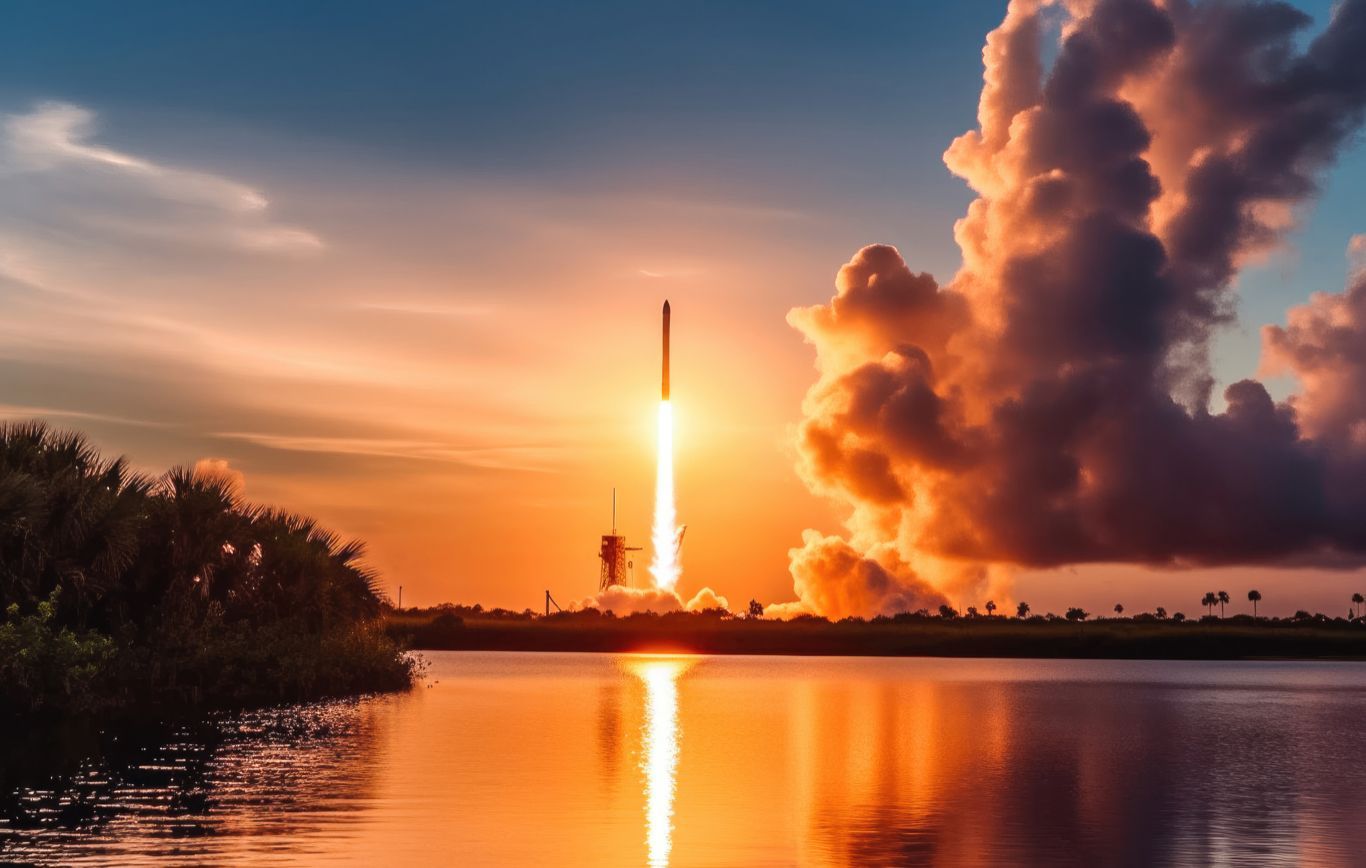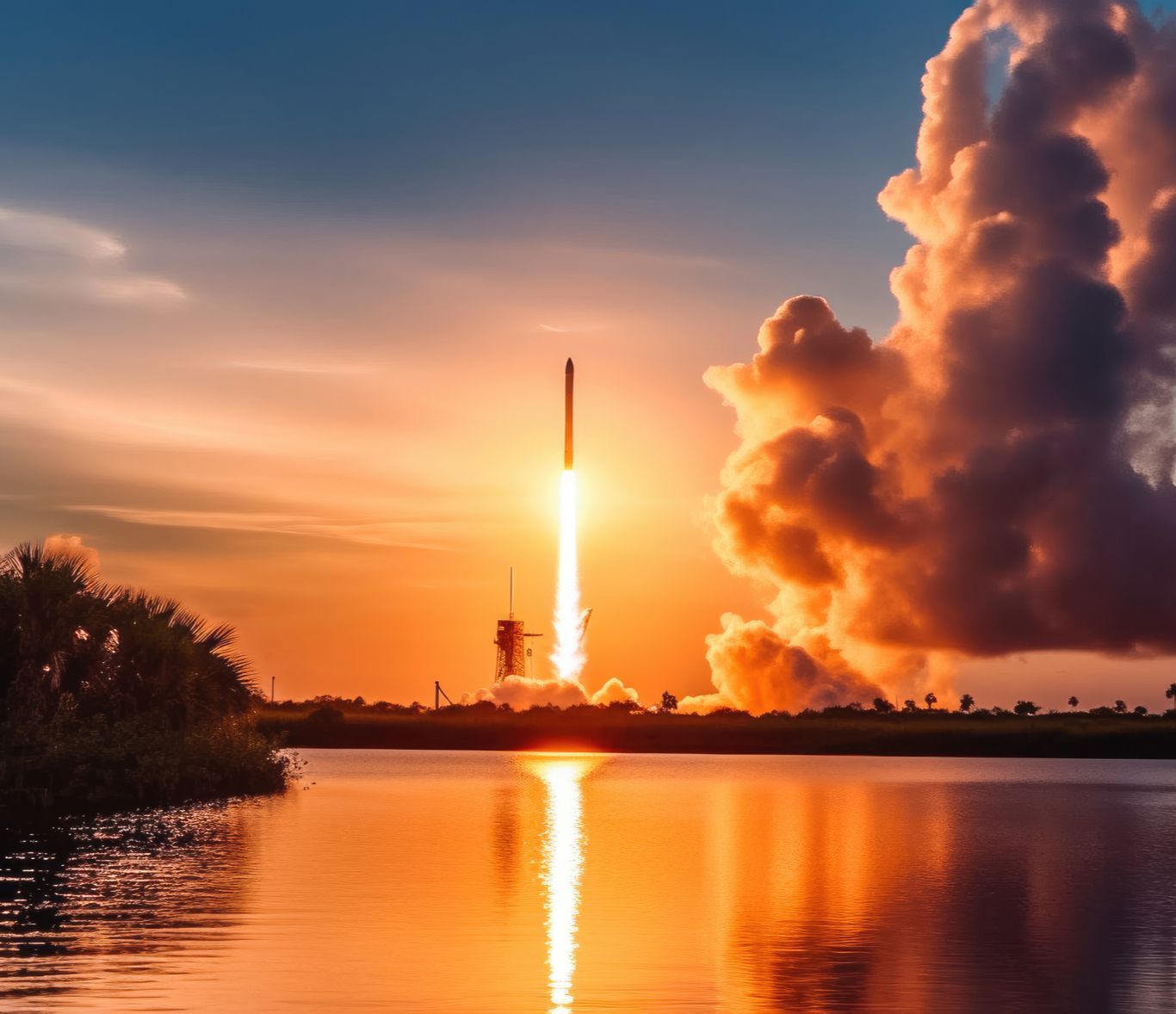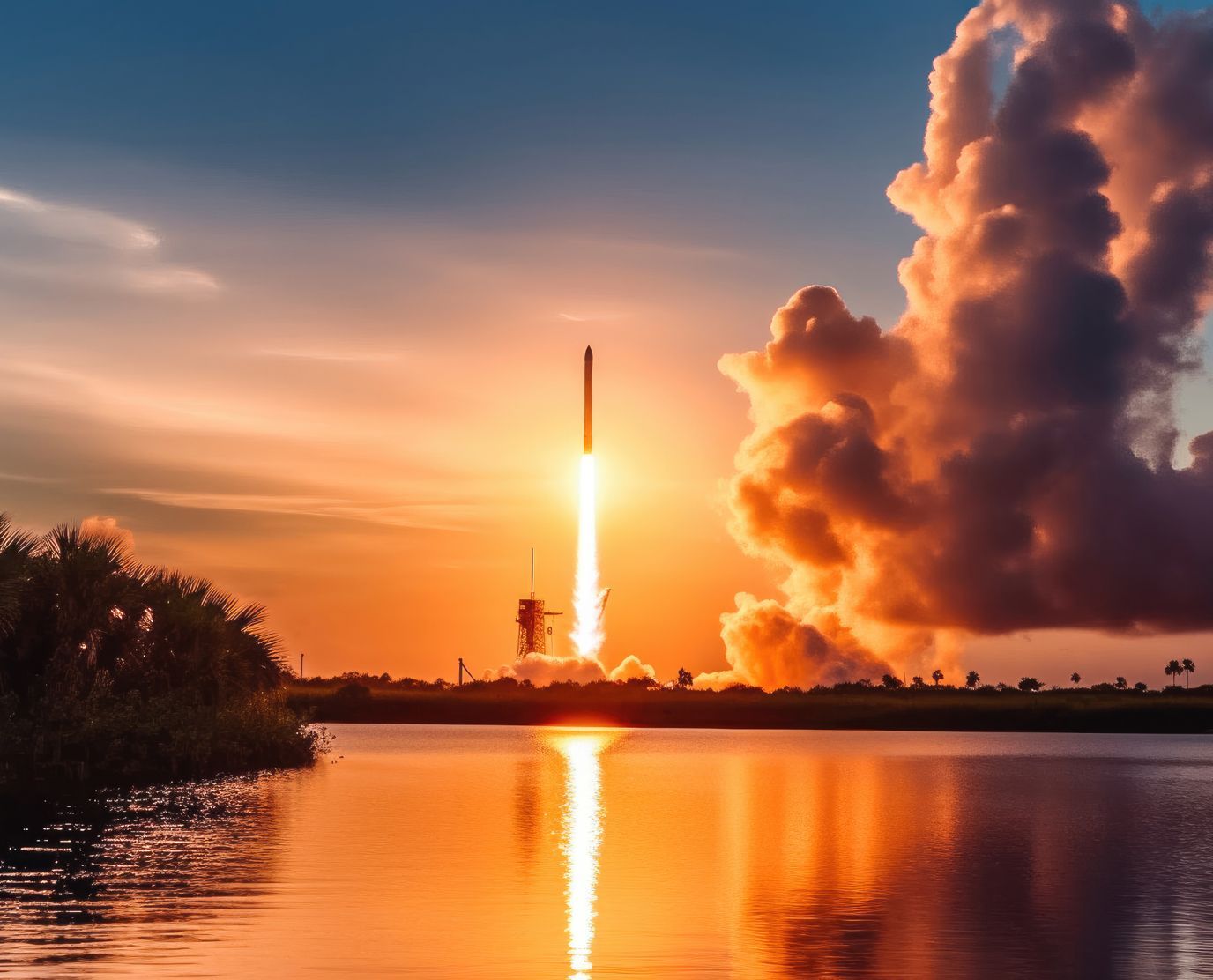21 October 2023

(Image: Adobe)
The commercial space launch market is seemingly an expanding space. Within the coming months we are due to see the first launches from startups such as Skyrora (UK), Orbex Space (UK) and Rocket Factory Augsburg (Germany). We’ve also seen European spaceflight take a step forwards with the debut launch of PLD Space’s (Spain) Miura-1 rocket, and last month saw the US increase their reliance on the commercial sector for tactical launch with the Victor Nox mission, a responsive demonstration proving the viability of rapid access to orbit working with Firefly Aerospace.
It would seem that with increasing demands for access to space, launch startups have much to be optimistic about. However, SpaceX may be proving to be a stumbling block. In a panel discussion at the Satellite Innovation conference this week, executives have said that the company is making small launch companies struggle to compete on price. SpaceX currently charges as little $5,500 per kilo to for satellite ride share launches, but Curt Blake, former chief executive of Spaceflight, claims that SpaceX could charge around double that price and still have a significant command of the market.
Small launch companies will be struggling to compete at such a low price, and Steve Jurvetson, co-founder of Future Ventures, warned that out of 200 small launch vehicles being developed, he predicts that “…over 100 of them will go bankrupt in the next two years…”.
Indeed there is a lot of competition and companies will further be concerned when SpaceX’s Starship is available, with its massively increased payload capacity. Furthermore, the company has this week revealed new staggering numbers about its launch cadence, stating that next year they intend to carry out around 144 flights. Last year they launched 61 missions and are aiming fro 100 by the end of 2023.
Smaller companies may not need to lose hope just yet, however. The Victus Nox mission goes to prove that there is a need for diversification and perhaps a desire to reduce reliance only one partner or supply chain. Furthermore, nations and agencies, such as ESA, are continuing to highlight the need for sovereign and non-dependant launch access, proving that outside the US, these companies may find they have a place to grow. Nonetheless, it’s certain that SpaceX will be commanding the launch market for some time to come.
US call for more access to commercial space technology
The overall growth of the launch market, and the ongoing dominance of SpaceX, really is a reflection of the increasing reliance on the commercial sector. In a similar plan to Victus Nox, the US Space Force is also looking to secure access to commercial satellite services, in a plan named the Commercial Augmentation Space Reserve (CASR). The plan aims to secure access to services such as communications and remote sensing such as in times of conflict or emergency.
Furthermore, this week NASA Ames Research Centre announced that they will open a new space centre in cooperation with the University of California. The $2 billion Berkeley Space Center, announced on October 16th, will be used to encourage cooperation amongst academia, government and industry. Dan Kingsley, managing partner of SKS Partners, said that “a very broad selection of private industry” will probably lease parts of the facility, again outlining the increasingly prominent role that the private sector now holds.
Blue Origin announce multi-purpose space vehicle
Blue Origin, one of the hopeful leaders in commercial space applications, have this week announced more details of their latest innovative technology, named Blue Ring. The vehicle is designed to leapfrog other Orbital Transfer Vehicles, a growing market in itself, in being able to transport payloads between different orbits, but also be adaptable for different uses such as refuelling and other logistical services.
This may well suggest a change in strategy for the company. The news was also broken last month that Blue were set the end their cooperation with Sierra Space on the Orbital Reef commercial space station, perhaps not seeing it as a top priority.
The company has also been struggling to get their reusable New Glenn rocket off the ground, and have been beset with problems on New Shepard since its launch failure last year. The launch of Blue Ring, set for 2025, may be a change in direction for the company, seeing the OTV market and the rapid growth of the orbital infrastructure as an area where they can take the lead.
SpaceX are undoubtedly commanding the commercial launch market, and a number of other alliances are developing their own commercial stations, but perhaps Blue might have found their new entry point.
Different approaches to asteroid mining
The launch of NASA’s Psyche asteroid observation mission on October 13th represented the developing interest in knowing more about these celestial bodies, while also awakened intrigue about the prospect of asteroid mining.
While the mission itself is designed to study the metallic makeup of the asteroid, in order to better understand the cores of plants such as Earth’s, attention was drawn to the asteroid in 2021, when it was given a valuation of $10,000 quintillion, due to its makeup of valuable materials such as iron and nickel.
It may be some time until it is feasible to retrieve resources from such asteroids, and questions have been raised to what the economic impact could be if it were to be flooded with an abundance of rare materials. However, some companies are aiming to get there, one way or the other.
The Asteroid Mining Corporation (UK) recently unveiled its Space Capable Asteroid Robotic-Explorer (SCAR-E) robot, designed to eventually prospect asteroids. However, noting that the asteroid mining market is still some years away, the company intends to advertise the robot for terrestrial purposes until then. “Space resources is a very exciting industry. But it’s one which, let’s be honest, isn’t currently existing fully into its mature sense” said Mitch Hunter-Scullion, Asteroid Mining Corp. CEO and founder, speaking at the Space Economy Summit on October 11th. For now it will be taken to the industrial inspection market, and could be used, for example, inspecting the hulls of ships.
However, by 2026-7, the company aims to send the robot for applications on the ISS and the Moon. By the end of the decade they will hoping to send it to asteroids and explore the potential of resources in outer space. Interestingly, the company will also develop Alchemist-1, a materials-processing satellite. This could then be similar to the approach being taken by AstroForge (US) who plan to retrieve outer space resources and refine them in space, before being delivered to Earth.
Also, AstroForge have this week announced more details of their upcoming asteroid prospecting mission. Their Brokkr-2 spacecraft will launch with SpaceX next year and embark on a 9 month journey to an M-type asteroid, making it the first private company to visit an M-type asteroid and operate in deep space.
Rather than a step-by-step approach to asteroid mining, taken by Asteroid Mining Corp. and TransAstra, AstroForge are aiming to get straight to the final goal. “With a finite supply of precious metals on Earth, we have no other choice than to look to deep space to source cost-effective and sustainable materials,” said CEO Matthew Gialich in April.

India aim for crewed lunar landing (Adobe)
India sets space station and crewed lunar landing targets
India have remained in the news as of late, becoming the fourth nation to land on the Moon. Their Vikram lander and Pragryan rover arrived safely and went on to discover elements on the Moon such as iron, titanium, aluminum and high concentrations of sulphur.
The growing space nation now have their eyes set on a crewed landing on the lunar surface by 2040 and establishing their own independent spaceflight services. Furthermore they have also announced that they aim to construct their own independent space station by 2035, named the ‘Bharatiya Antariksha Station’.
The ISRO (Indian Space Agency) have also made headlines in their cost-effective approach to their Chandrayaan-3 mission, having a budget of just $91 million. With a growing private sector, ambitious plans and economical approach to development, we are quickly seeing the establishment of a new space superpower.
Our future in space

(Image: Adobe)
21 October 2023
SpaceX expand ambitions, government seek closer commercial sector ties and space mining missions on the horizon - Space News Roundup
The commercial space launch market is seemingly an expanding space. Within the coming months we are due to see the first launches from startups such as Skyrora (UK), Orbex Space (UK) and Rocket Factory Augsburg (Germany). We’ve also seen European spaceflight take a step forwards with the debut launch of PLD Space’s (Spain) Miura-1 rocket, and last month saw the US increase their reliance on the commercial sector for tactical launch with the Victor Nox mission, a responsive demonstration proving the viability of rapid access to orbit working with Firefly Aerospace.
It would seem that with increasing demands for access to space, launch startups have much to be optimistic about. However, SpaceX may be proving to be a stumbling block. In a panel discussion at the Satellite Innovation conference this week, executives have said that the company is making small launch companies struggle to compete on price. SpaceX currently charges as little $5,500 per kilo to for satellite ride share launches, but Curt Blake, former chief executive of Spaceflight, claims that SpaceX could charge around double that price and still have a significant command of the market.
Small launch companies will be struggling to compete at such a low price, and Steve Jurvetson, co-founder of Future Ventures, warned that out of 200 small launch vehicles being developed, he predicts that “…over 100 of them will go bankrupt in the next two years…”.
Indeed there is a lot of competition and companies will further be concerned when SpaceX’s Starship is available, with its massively increased payload capacity. Furthermore, the company has this week revealed new staggering numbers about its launch cadence, stating that next year they intend to carry out around 144 flights. Last year they launched 61 missions and are aiming fro 100 by the end of 2023.
Smaller companies may not need to lose hope just yet, however. The Victus Nox mission goes to prove that there is a need for diversification and perhaps a desire to reduce reliance only one partner or supply chain. Furthermore, nations and agencies, such as ESA, are continuing to highlight the need for sovereign and non-dependant launch access, proving that outside the US, these companies may find they have a place to grow. Nonetheless, it’s certain that SpaceX will be commanding the launch market for some time to come.
US call for more access to commercial space technology
The overall growth of the launch market, and the ongoing dominance of SpaceX, really is a reflection of the increasing reliance on the commercial sector. In a similar plan to Victus Nox, the US Space Force is also looking to secure access to commercial satellite services, in a plan named the Commercial Augmentation Space Reserve (CASR). The plan aims to secure access to services such as communications and remote sensing such as in times of conflict or emergency.
Furthermore, this week NASA Ames Research Centre announced that they will open a new space centre in cooperation with the University of California. The $2 billion Berkeley Space Center, announced on October 16th, will be used to encourage cooperation amongst academia, government and industry. Dan Kingsley, managing partner of SKS Partners, said that “a very broad selection of private industry” will probably lease parts of the facility, again outlining the increasingly prominent role that the private sector now holds.
Blue Origin announce multi-purpose space vehicle
Blue Origin, one of the hopeful leaders in commercial space applications, have this week announced more details of their latest innovative technology, named Blue Ring. The vehicle is designed to leapfrog other Orbital Transfer Vehicles, a growing market in itself, in being able to transport payloads between different orbits, but also be adaptable for different uses such as refuelling and other logistical services.
This may well suggest a change in strategy for the company. The news was also broken last month that Blue were set the end their cooperation with Sierra Space on the Orbital Reef commercial space station, perhaps not seeing it as a top priority.
The company has also been struggling to get their reusable New Glenn rocket off the ground, and have been beset with problems on New Shepard since its launch failure last year. The launch of Blue Ring, set for 2025, may be a change in direction for the company, seeing the OTV market and the rapid growth of the orbital infrastructure as an area where they can take the lead.
SpaceX are undoubtedly commanding the commercial launch market, and a number of other alliances are developing their own commercial stations, but perhaps Blue might have found their new entry point.
Different approaches to asteroid mining
The launch of NASA’s Psyche asteroid observation mission on October 13th represented the developing interest in knowing more about these celestial bodies, while also awakened intrigue about the prospect of asteroid mining.
While the mission itself is designed to study the metallic makeup of the asteroid, in order to better understand the cores of plants such as Earth’s, attention was drawn to the asteroid in 2021, when it was given a valuation of $10,000 quintillion, due to its makeup of valuable materials such as iron and nickel.
It may be some time until it is feasible to retrieve resources from such asteroids, and questions have been raised to what the economic impact could be if it were to be flooded with an abundance of rare materials. However, some companies are aiming to get there, one way or the other.
The Asteroid Mining Corporation (UK) recently unveiled its Space Capable Asteroid Robotic-Explorer (SCAR-E) robot, designed to eventually prospect asteroids. However, noting that the asteroid mining market is still some years away, the company intends to advertise the robot for terrestrial purposes until then. “Space resources is a very exciting industry. But it’s one which, let’s be honest, isn’t currently existing fully into its mature sense” said Mitch Hunter-Scullion, Asteroid Mining Corp. CEO and founder, speaking at the Space Economy Summit on October 11th. For now it will be taken to the industrial inspection market, and could be used, for example, inspecting the hulls of ships.
However, by 2026-7, the company aims to send the robot for applications on the ISS and the Moon. By the end of the decade they will hoping to send it to asteroids and explore the potential of resources in outer space. Interestingly, the company will also develop Alchemist-1, a materials-processing satellite. This could then be similar to the approach being taken by AstroForge (US) who plan to retrieve outer space resources and refine them in space, before being delivered to Earth.
Also, AstroForge have this week announced more details of their upcoming asteroid prospecting mission. Their Brokkr-2 spacecraft will launch with SpaceX next year and embark on a 9 month journey to an M-type asteroid, making it the first private company to visit an M-type asteroid and operate in deep space.
Rather than a step-by-step approach to asteroid mining, taken by Asteroid Mining Corp. and TransAstra, AstroForge are aiming to get straight to the final goal. “With a finite supply of precious metals on Earth, we have no other choice than to look to deep space to source cost-effective and sustainable materials,” said CEO Matthew Gialich in April.

India aim for crewed lunar landing (Adobe)
India sets space station and crewed lunar landing targets
India have remained in the news as of late, becoming the fourth nation to land on the Moon. Their Vikram lander and Pragryan rover arrived safely and went on to discover elements on the Moon such as iron, titanium, aluminum and high concentrations of sulphur.
The growing space nation now have their eyes set on a crewed landing on the lunar surface by 2040 and establishing their own independent spaceflight services. Furthermore they have also announced that they aim to construct their own independent space station by 2035, named the ‘Bharatiya Antariksha Station’.
The ISRO (Indian Space Agency) have also made headlines in their cost-effective approach to their Chandrayaan-3 mission, having a budget of just $91 million. With a growing private sector, ambitious plans and economical approach to development, we are quickly seeing the establishment of a new space superpower.
Share this article
21 October 2023
SpaceX expand ambitions, government seek closer commercial sector ties and space mining missions on the horizon - Space News Roundup

(Image: Adobe)
The commercial space launch market is seemingly an expanding space. Within the coming months we are due to see the first launches from startups such as Skyrora (UK), Orbex Space (UK) and Rocket Factory Augsburg (Germany). We’ve also seen European spaceflight take a step forwards with the debut launch of PLD Space’s (Spain) Miura-1 rocket, and last month saw the US increase their reliance on the commercial sector for tactical launch with the Victor Nox mission, a responsive demonstration proving the viability of rapid access to orbit working with Firefly Aerospace.
It would seem that with increasing demands for access to space, launch startups have much to be optimistic about. However, SpaceX may be proving to be a stumbling block. In a panel discussion at the Satellite Innovation conference this week, executives have said that the company is making small launch companies struggle to compete on price. SpaceX currently charges as little $5,500 per kilo to for satellite ride share launches, but Curt Blake, former chief executive of Spaceflight, claims that SpaceX could charge around double that price and still have a significant command of the market.
Small launch companies will be struggling to compete at such a low price, and Steve Jurvetson, co-founder of Future Ventures, warned that out of 200 small launch vehicles being developed, he predicts that “…over 100 of them will go bankrupt in the next two years…”.
Indeed there is a lot of competition and companies will further be concerned when SpaceX’s Starship is available, with its massively increased payload capacity. Furthermore, the company has this week revealed new staggering numbers about its launch cadence, stating that next year they intend to carry out around 144 flights. Last year they launched 61 missions and are aiming fro 100 by the end of 2023.
Smaller companies may not need to lose hope just yet, however. The Victus Nox mission goes to prove that there is a need for diversification and perhaps a desire to reduce reliance only one partner or supply chain. Furthermore, nations and agencies, such as ESA, are continuing to highlight the need for sovereign and non-dependant launch access, proving that outside the US, these companies may find they have a place to grow. Nonetheless, it’s certain that SpaceX will be commanding the launch market for some time to come.
US call for more access to commercial space technology
The overall growth of the launch market, and the ongoing dominance of SpaceX, really is a reflection of the increasing reliance on the commercial sector. In a similar plan to Victus Nox, the US Space Force is also looking to secure access to commercial satellite services, in a plan named the Commercial Augmentation Space Reserve (CASR). The plan aims to secure access to services such as communications and remote sensing such as in times of conflict or emergency.
Furthermore, this week NASA Ames Research Centre announced that they will open a new space centre in cooperation with the University of California. The $2 billion Berkeley Space Center, announced on October 16th, will be used to encourage cooperation amongst academia, government and industry. Dan Kingsley, managing partner of SKS Partners, said that “a very broad selection of private industry” will probably lease parts of the facility, again outlining the increasingly prominent role that the private sector now holds.
Blue Origin announce multi-purpose space vehicle
Blue Origin, one of the hopeful leaders in commercial space applications, have this week announced more details of their latest innovative technology, named Blue Ring. The vehicle is designed to leapfrog other Orbital Transfer Vehicles, a growing market in itself, in being able to transport payloads between different orbits, but also be adaptable for different uses such as refuelling and other logistical services.
This may well suggest a change in strategy for the company. The news was also broken last month that Blue were set the end their cooperation with Sierra Space on the Orbital Reef commercial space station, perhaps not seeing it as a top priority.
The company has also been struggling to get their reusable New Glenn rocket off the ground, and have been beset with problems on New Shepard since its launch failure last year. The launch of Blue Ring, set for 2025, may be a change in direction for the company, seeing the OTV market and the rapid growth of the orbital infrastructure as an area where they can take the lead.
SpaceX are undoubtedly commanding the commercial launch market, and a number of other alliances are developing their own commercial stations, but perhaps Blue might have found their new entry point.
Different approaches to asteroid mining
The launch of NASA’s Psyche asteroid observation mission on October 13th represented the developing interest in knowing more about these celestial bodies, while also awakened intrigue about the prospect of asteroid mining.
While the mission itself is designed to study the metallic makeup of the asteroid, in order to better understand the cores of plants such as Earth’s, attention was drawn to the asteroid in 2021, when it was given a valuation of $10,000 quintillion, due to its makeup of valuable materials such as iron and nickel.
It may be some time until it is feasible to retrieve resources from such asteroids, and questions have been raised to what the economic impact could be if it were to be flooded with an abundance of rare materials. However, some companies are aiming to get there, one way or the other.
The Asteroid Mining Corporation (UK) recently unveiled its Space Capable Asteroid Robotic-Explorer (SCAR-E) robot, designed to eventually prospect asteroids. However, noting that the asteroid mining market is still some years away, the company intends to advertise the robot for terrestrial purposes until then. “Space resources is a very exciting industry. But it’s one which, let’s be honest, isn’t currently existing fully into its mature sense” said Mitch Hunter-Scullion, Asteroid Mining Corp. CEO and founder, speaking at the Space Economy Summit on October 11th. For now it will be taken to the industrial inspection market, and could be used, for example, inspecting the hulls of ships.
However, by 2026-7, the company aims to send the robot for applications on the ISS and the Moon. By the end of the decade they will hoping to send it to asteroids and explore the potential of resources in outer space. Interestingly, the company will also develop Alchemist-1, a materials-processing satellite. This could then be similar to the approach being taken by AstroForge (US) who plan to retrieve outer space resources and refine them in space, before being delivered to Earth.
Also, AstroForge have this week announced more details of their upcoming asteroid prospecting mission. Their Brokkr-2 spacecraft will launch with SpaceX next year and embark on a 9 month journey to an M-type asteroid, making it the first private company to visit an M-type asteroid and operate in deep space.
Rather than a step-by-step approach to asteroid mining, taken by Asteroid Mining Corp. and TransAstra, AstroForge are aiming to get straight to the final goal. “With a finite supply of precious metals on Earth, we have no other choice than to look to deep space to source cost-effective and sustainable materials,” said CEO Matthew Gialich in April.

India aim for crewed lunar landing (Adobe)
India sets space station and crewed lunar landing targets
India have remained in the news as of late, becoming the fourth nation to land on the Moon. Their Vikram lander and Pragryan rover arrived safely and went on to discover elements on the Moon such as iron, titanium, aluminum and high concentrations of sulphur.
The growing space nation now have their eyes set on a crewed landing on the lunar surface by 2040 and establishing their own independent spaceflight services. Furthermore they have also announced that they aim to construct their own independent space station by 2035, named the ‘Bharatiya Antariksha Station’.
The ISRO (Indian Space Agency) have also made headlines in their cost-effective approach to their Chandrayaan-3 mission, having a budget of just $91 million. With a growing private sector, ambitious plans and economical approach to development, we are quickly seeing the establishment of a new space superpower.
Share this article

